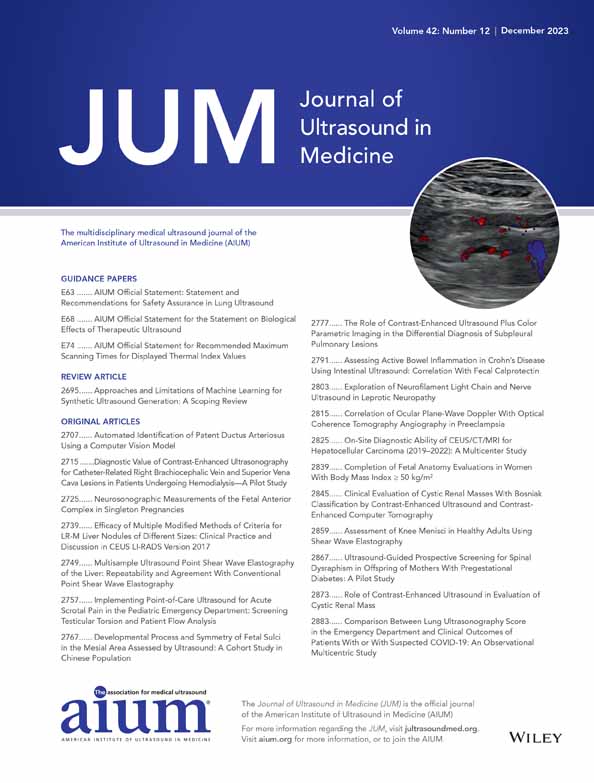Multisample Ultrasound Point Shear Wave Elastography of the Liver
Repeatability and Agreement With Conventional Point Shear Wave Elastography
Grant funding for this investigator-initiated study was provided by Siemens Healthineers (Dillman and Trout). Drs. Dillman and Trout controlled the data at all times and performed all analyses.
Abstract
Objective
To characterize the technical performance of a multisample ultrasound point shear wave elastography (pSWE) technique that allows 15 individual measurements of liver stiffness in a single acquisition.
Methods
In 56 overweight and obese adults, research ultrasound examinations were performed using conventional pSWE and multisample pSWE (Sequoia; Siemens Healthineers). Five independent measurements were acquired with the conventional technique over five consecutive breath holds (5C1 and DAX transducers). A single multisample acquisition (DAX transducer) of up to 15 unique measurements was acquired during a single breath hold. All imaging was performed before (baseline) and after a “coffee break” (repeat). Median liver stiffness measurements between techniques and between baseline and repeat imaging were compared using Pearson correlation (r) and intra-class correlation (ICC) coefficients.
Results
Mean participant age was 33.7 ± 11.4 years; 40 participants were female. There was high correlation between conventional pSWE measurements obtained using the 5C1 and DAX transducers at baseline (r = .75 [95% CI: 0.61–0.85], P < .0001) and repeat (r = .88 [95% CI: 0.78–0.92], P < .0001). There was moderate agreement between conventional pSWE measurements obtained using the 5C1 and DAX transducers at baseline (ICC = 0.69 [95% CI: 0.52–0.81]), and good agreement at repeat (ICC = 0.81 [95% CI: 0.65–0.90]). There was moderate correlation (r = .59 [95% CI: 0.39–0.74], P < .0001) and moderate agreement (ICC = 0.58 [95% CI: 0.38–0.73]) between baseline conventional and multisample pSWE measurements acquired using the DAX transducer; there was high correlation (r = .73 [95% CI: 0.57–0.83], P < .0001) and moderate agreement (ICC = 0.72 [95% CI: 0.56–0.82] between techniques at repeat. There was moderate correlation (r = .65 [95% CI: 0.46–0.78], P < .0001) and moderate agreement (ICC = 0.64 [95% CI: 0.45–0.77]) between baseline and repeat multisample pSWE measurements.
Conclusions
Multisample pSWE, allowing up to 15 measurements in a single breath hold, showed moderate to high correlation and moderate agreement with conventional pSWE.
Open Research
Data availability statement
The data that support the findings of this study are available from the corresponding author upon reasonable request.




